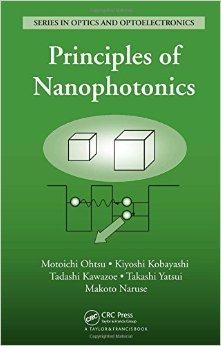CRC Press, Taylor & Francis, 2008, 222 pages
Coauthored by the developer of nanophotonics, Principles of Nanophotonics outlines physically intuitive concepts of the subject using a novel theoretical framework that differs from conventional wave optics. It probes far-reaching physical insights into the local electromagnetic interaction in the nanometric subsystem composed of electrons and photons.
Chapter 1 of this book reviews the background, history, and present status of research and development in nanophotonics and related technologies. It explains why qualitative innovation lies at the heart of nanophotonics. Chapter 2 presents a novel theoretical model and a new approach that describes the interaction between nanometric material systems via optical near-fields in a physically intuitive manner. Nanophotonic devices and systems are designed and their performances are analyzed using this model. A non-adiabatic fabrication process is also evaluated using this model.
Chapters 3 and 4 deal with nanophotonic devices and fabrication techniques, and present examples of qualitative innovation. Chapter 5 presents a novel nanophotonic system realized by assembling nanophotonic devices. Its performance is also an example of qualitative innovation in optical information technology.
Coauthored by the developer of nanophotonics, Principles of Nanophotonics outlines physically intuitive concepts of the subject using a novel theoretical framework that differs from conventional wave optics. It probes far-reaching physical insights into the local electromagnetic interaction in the nanometric subsystem composed of electrons and photons.
Chapter 1 of this book reviews the background, history, and present status of research and development in nanophotonics and related technologies. It explains why qualitative innovation lies at the heart of nanophotonics. Chapter 2 presents a novel theoretical model and a new approach that describes the interaction between nanometric material systems via optical near-fields in a physically intuitive manner. Nanophotonic devices and systems are designed and their performances are analyzed using this model. A non-adiabatic fabrication process is also evaluated using this model.
Chapters 3 and 4 deal with nanophotonic devices and fabrication techniques, and present examples of qualitative innovation. Chapter 5 presents a novel nanophotonic system realized by assembling nanophotonic devices. Its performance is also an example of qualitative innovation in optical information technology.

